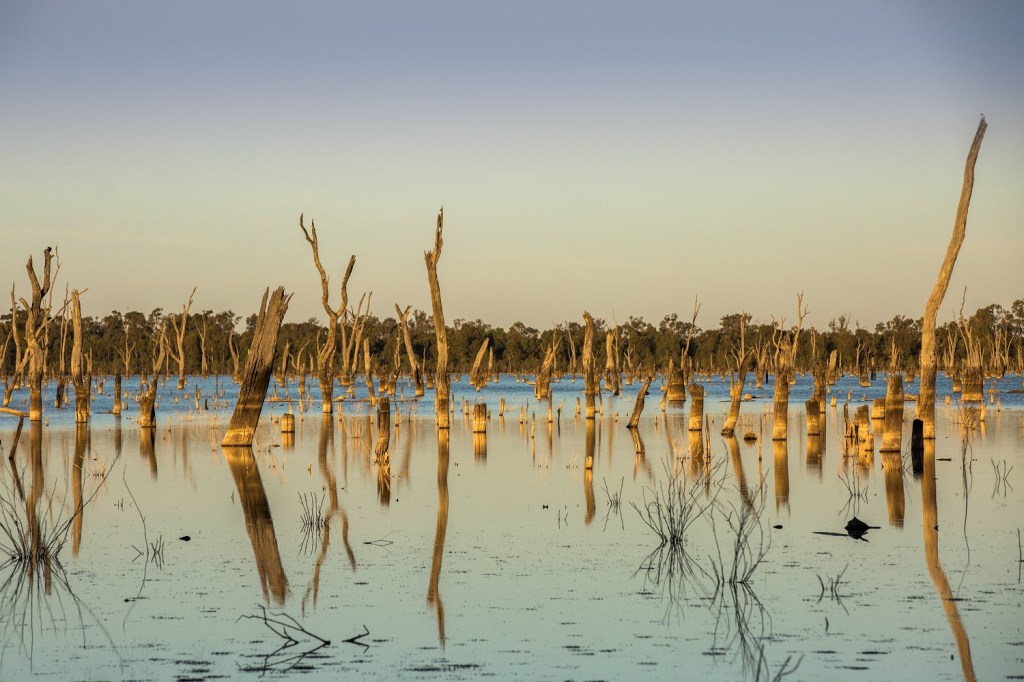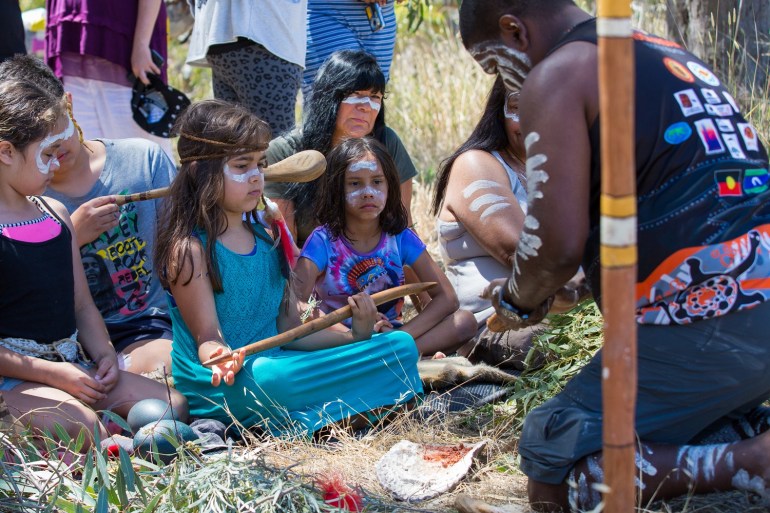As Australia’s identity is again called into question ahead of January 26, an upcoming documentary attempts to offer fresh insight into the reconciliation process.
Bill Code’s The Lake of Scars details the relationship between an ageing white former farmer and members of Victoria’s Yung Balug clan of the Dja Dja Wurrung, as they seek to showcase and protect Australia’s largest collection of scarred trees.
Filmed across six years and funded with the support of Victorian Aboriginal Heritage Council, the documentary is hosted by Dja Dja Wurrung actor Uncle Jack Charles. It features Jida Gulpilil, son of late actor David Gulpilil, who shares the story of the scarred trees, middens and stone scatters that line Lake Boort on the edge of the Victorian Mallee.
Code and producer Christian Pazzaglia collaborated closely with members of the Yung Balug clan, as well as executive producer Wyrker Milloo Gary Murray and cultural adviser Ngarra Murray, while composer David Bridie supported Gulpilil in making a score heavy with Dja Dja Wurrung language.
The film will premiere at next month’s Antenna Documentary Film Festival as the only Australian selection in the feature film competition, with Code and Pazzaglia appearing in an in-person Q&A following the first screening on February 5.
Code, a former journalist, told IF he was initially inspired to make a film after visiting the area while working on a story for SBS in 2014.
“I went to Boort to cover the repatriation of some Yung Balug ancestors from one of the museums in Victoria and, as soon as I was there, I was really struck by the relationship between members of the clan and Paul and Cathie Haw, who are the white former farmers in the film,” he said.
“Paul effectively looked after country in their absence with their blessing, and their relationship seemed beautiful to me.
“I’d also never come across anything like the scarred trees on the lake and a lot of Australians aren’t familiar with scarred trees either, so I thought, ‘When I’m not a full-time journo, I’m cover this’.”

After going freelance, Code returned to Boort to begin work on a short documentary, but was soon encouraged to expand the project.
“Someone suggested it should be a half-hour documentary and when I made that, a broadcaster said it should be an hour,” he said.
“Once it got to an hour and there were a few more people involved, we realised we had story that dealt with archaeology, heritage, reconciliation, so we thought we’d just go for a feature film.
“It took many stages, where we could have published a short film or tried to make it a half-hour, but we just kept going because there were so many competing scenes that we took our time to weave them into something cohesive.”
Following its premiere at Antenna, the film will be distributed locally via Ronin Pictures, with a Victorian premiere scheduled for May. SBS/NITV has also made an offer to acquire the documentary.
Code said there are plans to bring an Indigenous impact producer onboard to further the educational aspect of the project.
“When it comes scarred trees and artefacts, there just aren’t that many resources,” he said.
“We’ve always known that this could be a really good film in the educational space to let people know what they are, that they’re disappearing, and how they are a tangible link to the culture that thrived for a long time before white people came along.”
The Lake of Scars will be shown at Dendy Newtown on Saturday, February 5, and at Palace Verona on Sunday, February 13 as part of the 10th Antenna Documentary Film Festival, which runs February 2-13.


